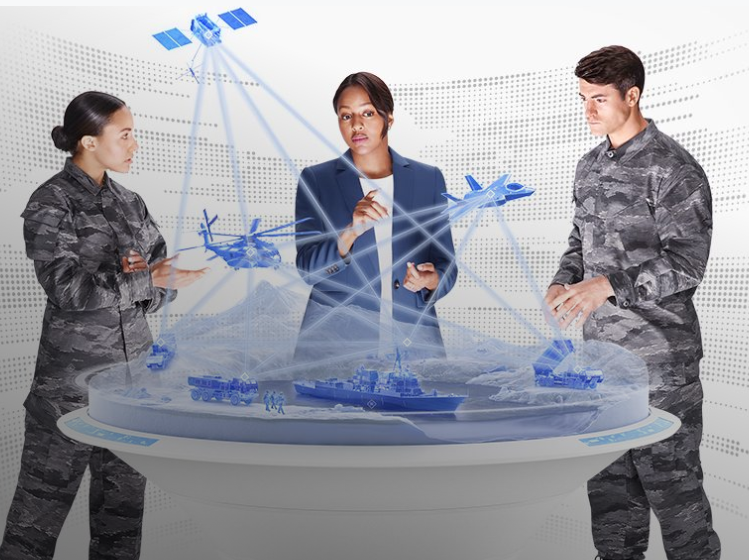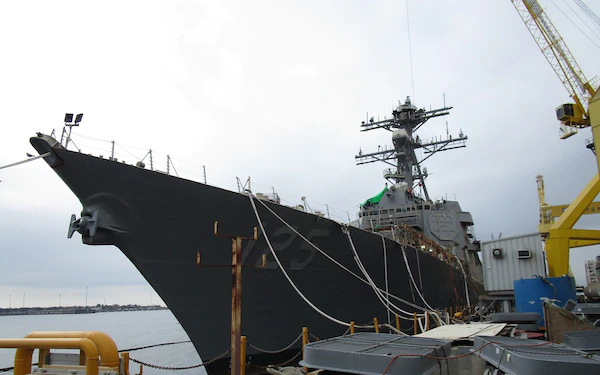Our Naval warfighters need unmatched technology solutions and more ready ships for the surface fleet to own the fight and maintain mission advantage. Now more than ever, they need to know they have the best capabilities to outpace any threat.
The next generation of warships to protect our nation and allies will be the Flight III variant of the DDG-51 Arleigh Burke-class guided missile destroyer. USS JACK H. LUCAS (DDG 125) will be the first of that new variant and equipped with drastically enhanced warfighting capabilities because of Aegis Baseline 10 (BL 10). To deliver the largest and most complicated Aegis baseline ever, the Lockheed Martin team accelerated transformation of our processes to deliver surface fleet capability at the speed of relevance. We are doing all we can to keep JACK on track!
The Most Capable and Complex Aegis Baseline Yet
What are we doing on BL 10 that is different than ever before?
- Agile program transformation – Embracing iterative and concurrent systems engineering and software coding rather than a waterfall approach to development and test
- Transitioned the Common Source Library software to a DevSecOps Continuous Integration / Continuous Delivery (CI/CD) software development environment pipeline
- Virtualization of the Aegis Weapon System code to easily perform on many computing infrastructures, enable digital twin capabilities, and facilitate rapid deployment to forward edge locations beyond the Lockheed Martin development laboratory
- Implementing microservices and agile core services to enable easier integration of new sensors and weapons
- Piloting improved automated system-level test and analysis with Innovative Defense Technologies (IDT) to improve software quality and reduce test time
- Implemented a "find and fix" test shot process, which enables engineers to immediately fix observed issues with a streamlined and pre-approved method
- Collaborated with the U.S. Navy to establish the Joint Integrated Test Team (JITT), which directs and streamlines the system test effort

JACK’s on Track: Green Lights Ahead
Virtualization enables software to simulate the characteristics of traditional hardware. This enables a single host to run multiple diverse guest operating environments/systems which are agnostic of the physical hardware where they reside. As a result, users of virtualized products experience management flexibility, including load, storage, and network resources. Having accomplished this with BL10, Lockheed Martin was able to use this Virtual Aegis Weapon System (VAWS) to accomplish BL10 critical DDG 125 test program software deliveries in ways that weren’t previously possible.
VAWS gives us the ability to deliver instances of Aegis where they are needed. This was especially important to help the program team combat the schedule, supply chain, and travel disruptions caused during the COVID-19 pandemic.
To Keep JACK on Track, we:
- Diverted existing assets from our Moorestown, New Jersey development facility to integrate a VAWS software suite with SPY-6 prototype radar antenna at Hawaii's Advanced Radar Development Engineering Lab (ARDEL) to include critical tracking exercises
- Executed vital radar interface tests with VAWS before the first production antenna was delivered to the U.S. Navy’s Combat System Engineering Development Site (CSEDS)
- Supported early remote combat systems integration testing with a VAWS asset at the Huntington Ingalls Pascagoula shipyard
- Established a VAWS suite at Naval Surface Warfare Center (NSWC) Dahlgren for the testing purposes of the Aegis Weapon System technical warrant holder
Almost two months ahead of schedule, DDG 125 achieved “light off” of its Aegis Combat System in December 2021, marking the start of onboard combat system testing and crew training. This marks the first time the new radar and BL 10 software interacted on a ship, though enabled by VAWS they’ve gone through extensive and ongoing land-based testing prior.
These critical test events and tracking exercises enabled the development of the SPY-6 radar and DDG 125 delivery to the U.S. Navy to remain on track. Previously, we would’ve had to wait for a radar to be delivered to our development site, potentially impacting ship delivery milestones. With the smaller VAWS physical footprint, we’ve been able to send the combat system to wherever the radar or other elements in need of integration reside.

Aegis Light Off (ALO) milestone marks the beginning of the ship’s combat systems test program that will culminate in readiness for Builder’s Trials, Acceptance Trials and eventual delivery to the fleet. Photo courtesy of the U.S. Navy
Lockheed Martin is Producing the Latest Combat Systems to Stay Ahead of Evolving Threats
Aegis Baseline 10 expands the battlespace far beyond what is currently available. The widened view of the threat environment will allow the U.S. Navy to sense potential threats at a greater distance. In contested environments, with the assistance of machine learning and artificial intelligence, BL 10 enables the warfighter to make critical decisions more rapidly and with greater confidence.
In addition to integrating a new air and missile defense radar, BL 10 evolves Aegis weapons control functions to provide increased defensive capability against anti-ship missile threats and raid sizes. This baseline upgrade also introduces features for improved force-level remote engagement capability and enhanced readiness.
Lockheed Martin’s development of BL 10 is the result of decades of building and connecting naval platforms to operate in every domain, building upon and surpassing previous efforts and insights gained on the Aegis program. To support the U.S. Navy’s drive towards a common implementation of functionality, each new BL10 capability enhancement is being developed to be deployed across the fleet with additional measures of maturity based on the digital transformative investments made by both the U.S. Navy and industry partners.
Lockheed Martin is proud to partner with the U.S. Navy, Huntington Ingalls shipbuilding, Raytheon Technologies, and other industry partners to achieve excellence in fleet introduction of this new warship variant. We continue to be “All-In” on Aegis Baseline 10 and we’ll keep “JACK on track” to successfully deliver the world’s most advanced warship.




